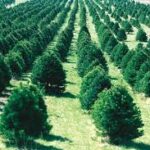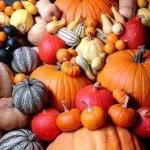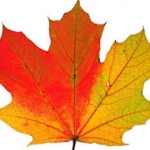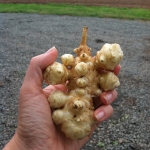Posts Tagged ‘Blue Moon Acres’
More Recycling, Please.
Many of us are old enough to remember the days before recycling bins, when bottles, cans, and plastic all went into the trash, no questions asked. As a nation, we’ve come a long way since then—over 87 percent of us currently have access to curbside recycling programs—but much work remains to be done. In fact,…
Read More »A Little Bit About Christmas Tree Farming
Everybody loves a freshly-cut Christmas tree. The smell, the look, the feel of all that winter greenery, right there in your home. But just what all goes into creating that tree? Christmas tree farming seems like it would be easy, but it’s actually quite time-intensive and laborious. Each Christmas season, between 35 and 40 million…
Read More »Pumpkin Power!
Halloween just wouldn’t be Halloween without pumpkins. Carved or uncarved, they make great decorations, and even better pies, stews, and soups. Pumpkins also have an interesting and unique history. Pumpkins arrived on the scene between 7,000 and 5,550 BC in Mexico. These early varieties bore more resemblance to gourds or squash than the creased orange…
Read More »Why Do Leaves Change Color?
Autumn is a magical time of year. The cooler weather, the smell of campfire, and the changing leaves. If you have the good fortune to live in the Northeast, the changing foliage can be quite dramatic indeed. But just why do leaves change color? What natural forces are at play here? There are three main…
Read More »Kale: So Much More than Just a Trend
Love it or hate it, kale is huge. Though recent articles tote the end of the kale craze, the reality is that the beloved green remains extremely popular. From its Greek and Roman origins to its modern proliferation, kale is one of the most enduring, healthy, easy-to-grow, and delicious vegetables of all times. And, not…
Read More »No Artichoke Like the Jerusalem Artichoke!
If you’re like me, you were in your mid-thirties before you had the pleasure of eating a Jerusalem artichoke. Also known as sunchokes, sunroots, or earth apples, these tubers are often used in soups, stews, or served roasted as a side dish. Though not as widely known as that other famous tuber, the potato, they’re…
Read More »Five Deliciously Unusual Fruit & Veggie Grilling Ideas!
Labor Day weekend is here, and with it the season’s last official ‘grill-worthy’ holiday. Today we take a look at five of the more unusual grilling options for in-season fruits and vegetables! Potatoes Sick of the same old boring potato salad? Liven things up with grilled potatoes! From grilled potato fries to grilled southwestern potato…
Read More »The Joys of Potato Farming
Each year in early August, something special happens here at Blue Moon Acres. Our Pennington, NJ farmers head for the fields and start hunting for buried treasure. Not gold, silver, or jewels, but a more edible kind of treasure: potatoes. It’s a magical experience, pulling those first few tubers from the ground—the sweet, earthy smell;…
Read More »Ode to Summer Savory
One of the perks of writing the product descriptions for Blue Moon’s weekly newsletters is getting to sample those products. This was especially true last week, when I had the pleasure to try the season’s first offering of Summer Savory. I was struck by the thymey, oreganoy flavor; the mild numbing effect it had on…
Read More »Five Ways to Deter Garden Pests!
Summer’s here and your garden’s in full swing. And so are those pesky garden pests, working overtime to make a mockery of all your hard work. Today we discuss 5 safe and natural ways to keep those pests at bay. 1. Hot sauce and dish detergent Would you enjoy a soapy hot sauce dressing with…
Read More »









